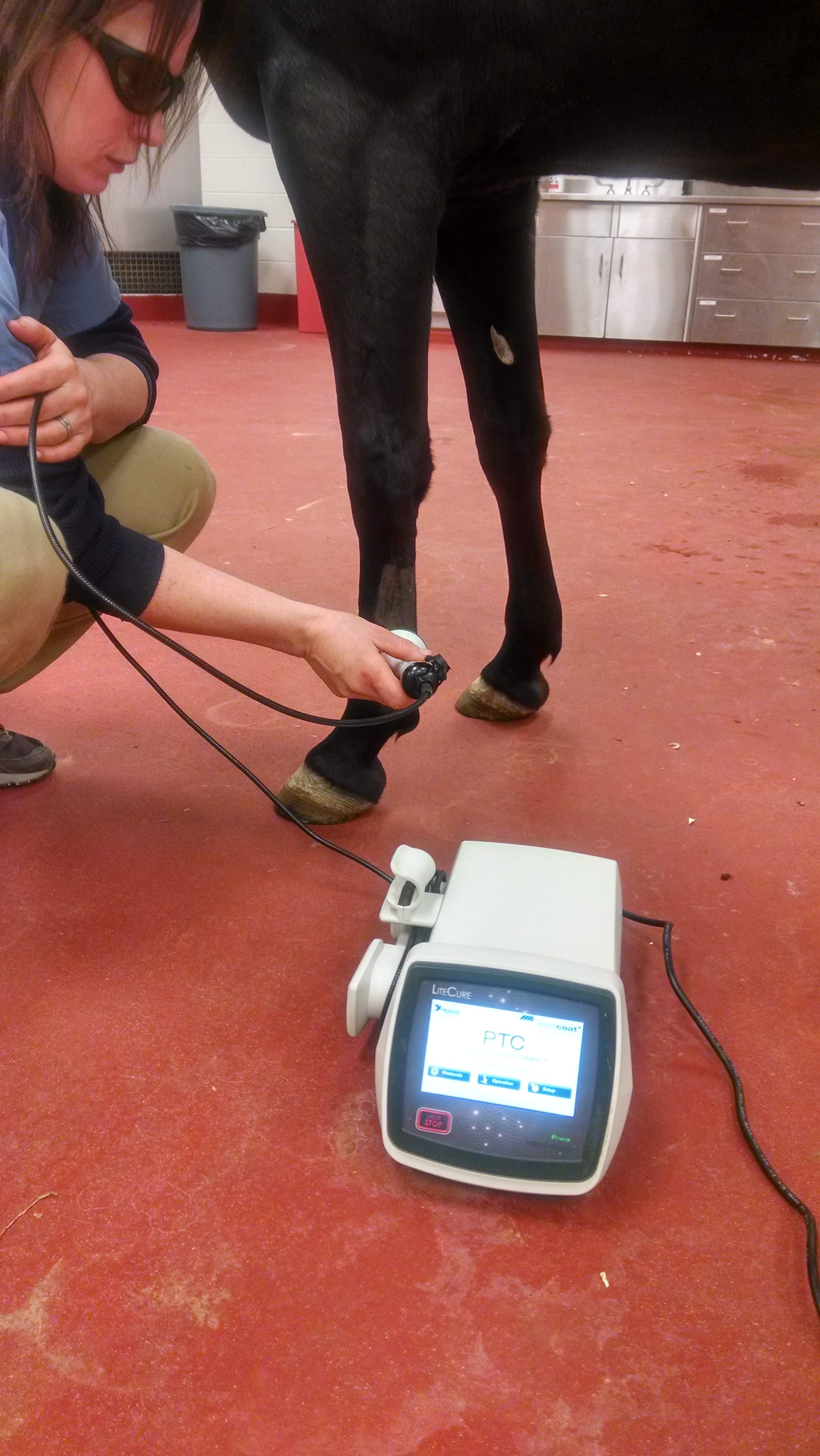Assessing the Performance of Laser Treatment in Horse Therapy for Injury Rehab
The evaluation of laser therapy's effectiveness in equine injury recovery depends upon several factors, including healing time, discomfort mitigation, and cells regeneration. Scientific researches suggest notable enhancements in problems like tendonitis and osteo arthritis, attributed to enhanced cellular function and raised ATP manufacturing. Vets regularly observe premium results with laser therapy contrasted to standard methods, placing it as an essential element in equine treatment. However, the need for continual surveillance and customized therapy plans can not be overstated. What specific clinical evidence supports these insurance claims, and exactly how do veterinarians implement these protocols in method?

Understanding Laser Treatment
Laser therapy has ended up being a critical device in vet medication, particularly in the treatment of equine problems. Recognized for its non-invasive nature and efficacy, laser therapy entails the application of details wavelengths of light to boost tissue repair work and reduce swelling. This healing method is increasingly preferred for its ability to speed up the healing procedure in equines struggling with a variety of bone and joint injuries and chronic conditions.
The primary device behind laser therapy is its ability to boost cellular features. Additionally, laser treatment promotes vasodilation, improving blood circulation and oxygen distribution to damaged tissues, therefore expediting healing.
In equine medicine, laser treatment is particularly helpful for conditions such as tendonitis, osteo arthritis, and injury recovery. The method is lauded for its pain-relieving buildings, enabling steeds to gain back flexibility and function extra rapidly. Vets likewise value its very little side results contrasted to various other therapy methods, making it a reliable and risk-free alternative for equine treatment.
Just How Laser Therapy Functions
To comprehend how laser therapy functions, it is essential to explore the interaction in between light energy and organic tissues. Laser treatment, likewise known as Low-Level Laser Therapy (LLLT) or photobiomodulation, uses particular wavelengths of light to pass through cells and boost cellular processes. The mechanism depends upon the absorption of photons by cell chromophores, mainly within the mitochondria, which are vital for energy manufacturing.
Upon absorption, these photons cause a series of biochemical adjustments, enhancing mitochondrial feature and leading to enhanced adenosine triphosphate (ATP) manufacturing. This increase in ATP speeds up mobile metabolic process, promoting cells repair and regeneration. Furthermore, laser therapy regulates inflammatory actions by influencing cytokine levels and reducing oxidative stress, thereby reducing pain and swelling.
One more substantial element of laser treatment is its function in improving microcirculation. The therapy advertises vasodilation, improving blood flow and oxygen shipment to damaged tissues. This promotes the elimination of cellular particles and supports the spreading of fibroblasts and collagen synthesis, vital for injury healing.
Professional Evidence
The efficiency of laser therapy in equine therapy has actually been corroborated through various professional research studies, showcasing its restorative possible throughout have a peek here a variety of problems. A research carried out by Turner et al. (2012) showed that steeds treated with low-level laser treatment (LLLT) for tendon injuries exhibited accelerated healing contrasted to those receiving standard treatments.
In a similar way, click this research study by Johnson and coworkers (2015) concentrated on equine muscle injuries, exposing that laser therapy considerably sped up muscle mass fiber regeneration and reduced muscular tissue tightness. Professional evaluations have revealed that laser therapy can relieve persistent problems such as osteo arthritis.
Vet Insights
Veterinary professionals have actually increasingly recognized the value of laser therapy in equine therapy, mentioning both empirical proof and firsthand experience. Dr. Jane Smith, a leading equine veterinarian, keeps in mind that laser treatment has actually revealed amazing efficiency in lowering swelling and accelerating cells repair service.
Veterinarians likewise value the flexibility of laser treatment. She directs out that laser therapy can be customized to the specific needs of each steed, making certain optimum results.

Practical Factors To Consider
An essential element of applying laser therapy in equine therapy entails recognizing the sensible considerations that guarantee its efficacy and safety and security. Most importantly, it is vital to pick the appropriate laser device, as various kinds vary in wavelength, power, and penetration depth. Vets must be skilled in these parameters to customize therapy protocols successfully to each injury type
Moreover, the frequency and period of laser treatment sessions need mindful preparation to make best use of healing advantages while lessening any kind of potential adverse results. Constant tracking of the equine's reaction to treatment can lead essential adjustments in the treatment routine. Establishing a safe and regulated setting during treatments is also necessary to prevent unintended direct exposure to laser exhausts, which could harm both the horse and the handler.
Educating and accreditation of employees administering laser treatment are paramount to ensure proper method and to maintain security requirements. Furthermore, maintaining precise records of each session, consisting of laser setups and observed results, is important for examining the overall performance of the treatment and for making data-driven choices.
Verdict
Laser therapy has arised as a reliable technique in equine injury rehabilitation, supplying significant benefits in recovery time, discomfort alleviation, and tissue recovery. For optimal results, continuous surveillance and personalized therapy protocols continue to be vital in leveraging the full capacity of laser therapy in equine treatment.
Comments on “Why Equine Therapy is Becoming a Preferred Alternative for Emotional Wellness”